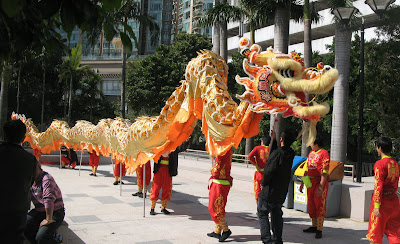Today, Hong Kong is pretty much unchanged although a bit shinier, and perhaps glitzier.
Many who fled prior to 1997 have returned.
 Hong Kong currently ranks as one of the top 10 most expensive destinations in the world. Staying at one of the upscale hotels will certainly make a dent in your wallet. However, there are very reasonable choices in the mid range price category.
Hong Kong currently ranks as one of the top 10 most expensive destinations in the world. Staying at one of the upscale hotels will certainly make a dent in your wallet. However, there are very reasonable choices in the mid range price category.The area to stay, if you want to be right in the thick of it, is Kowloon, or specifically the Tsim Sha Tsui area.
For about $110 USD a night, we chose the Butterfly On Prat. Hidden in a small alley, as many of the best secrets in Hong Kong usually are, is this small, unassuming property. We walked right past it on our first visit there and the doorman fetched us a few doors down the road to ask if we were looking for "the Butterfly".
Standard rooms are on the smallish side but very modern and nicely appointed. We didn't expect much of a view based on the location and size of the property (122 rooms), and we didn't get one. However, the best thing about this property is the staff. Everyone we encountered were helpful, courteous, and professional. Never mind that they put us in room 911.
 Christmas is coming in Hong Kong.
Christmas is coming in Hong Kong.
There are still temples scattered around Hong Kong but praying in them is more limited to "the few" and visiting tourists. Only on specific Buddhist holidays do the masses make their visits.


 For a slightly more upscale property, try "The Mira". Located right smack on the bustling Nathan Rd., right across the street from Kowloon Park, is this ultra-modern chic property with it's 500 rooms. Prices start at $200 USD per night.
For a slightly more upscale property, try "The Mira". Located right smack on the bustling Nathan Rd., right across the street from Kowloon Park, is this ultra-modern chic property with it's 500 rooms. Prices start at $200 USD per night.
 The only junks left in Hong Kong Harbour are the "billboard junks".
The only junks left in Hong Kong Harbour are the "billboard junks".
 Preserved meats and sausages. Hanging on top and on the bottom right are preserved duck (lop-op).
Preserved meats and sausages. Hanging on top and on the bottom right are preserved duck (lop-op).This oily, slightly smoked and dried meat is a very useful ingredient for flavoring just about anything from vegetable to rice dishes.
 The local meat markets are the same as they are all over Asia. Just tell them what you want and they'll whack off a piece for you.
The local meat markets are the same as they are all over Asia. Just tell them what you want and they'll whack off a piece for you.


 The developed area of Stanley Park has recently been labeled a "tourist trap" by many, and maybe rightly so. Gone are the colorful local eateries and shops which once inhabited the area. All replaced by a small shopping complex with uninteresting stores and dull restaurants serving even duller food.
The developed area of Stanley Park has recently been labeled a "tourist trap" by many, and maybe rightly so. Gone are the colorful local eateries and shops which once inhabited the area. All replaced by a small shopping complex with uninteresting stores and dull restaurants serving even duller food. Believe it or not, there still is room for another high rise complex on the Wan Chai shoreline on Hong Kong Island.
Believe it or not, there still is room for another high rise complex on the Wan Chai shoreline on Hong Kong Island. 
 Then there's the Jade Market. Located on Kansu and Battery Streets, it's about 400 small vendors selling everything from jade to mah-jong sets.
Then there's the Jade Market. Located on Kansu and Battery Streets, it's about 400 small vendors selling everything from jade to mah-jong sets. Cruel you say? Maybe, but keep in mind that tropical fish are shipped in these little bags around the world every day. And shipped fish certainly stay in the bags a lot longer than just the business day.
Cruel you say? Maybe, but keep in mind that tropical fish are shipped in these little bags around the world every day. And shipped fish certainly stay in the bags a lot longer than just the business day. Lemme out.
Lemme out.


Hong Kong is a vibrant, exciting city and certainly worth a visit, even if you're not a shopper. The food is very good, and when you think about it, isn't any more expensive than eating out back home. Especially since there's no tipping here. The best bargains are still the small restaurants where you can get a bowl of "jook" (rice porridge) in the morning, or noodle soup, wontons, or roast goose well after midnight.


 Even if you're not a shopper, stroll the market areas and take in the color and excitement that is Hong Kong.
Even if you're not a shopper, stroll the market areas and take in the color and excitement that is Hong Kong.*Hong Kong Tip: Purchase an Octopus Card and use it on Buses, the MTR, Ferries, Convenience Stores and for many other purchases. Just look for the Octopus Card logo. Every time you scan your card, it gives you a reading of the balance left on the card and you can top it off at many locations throughout the city. It's valid for up to three years after your last top-off date.
Hong Kong time:
.jpg)











No comments:
Post a Comment